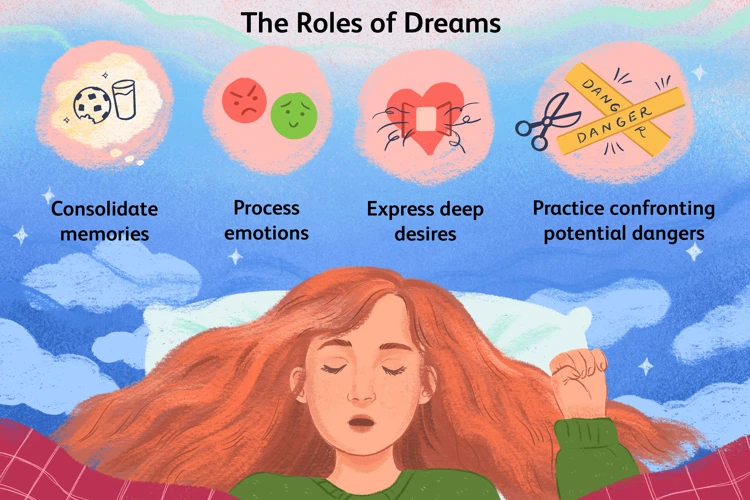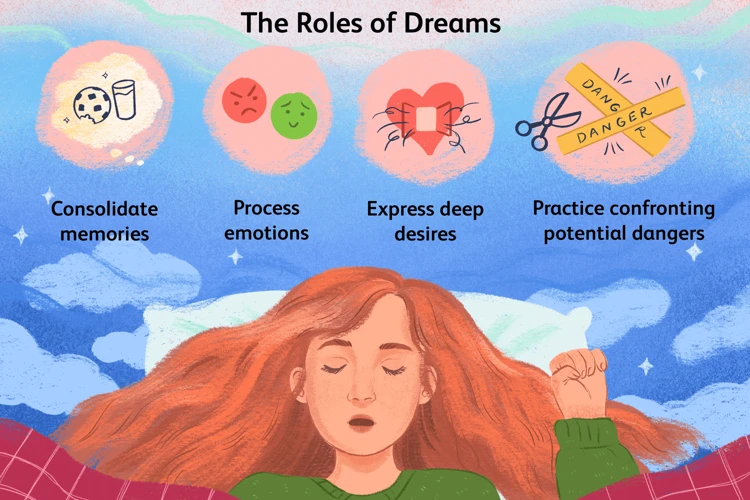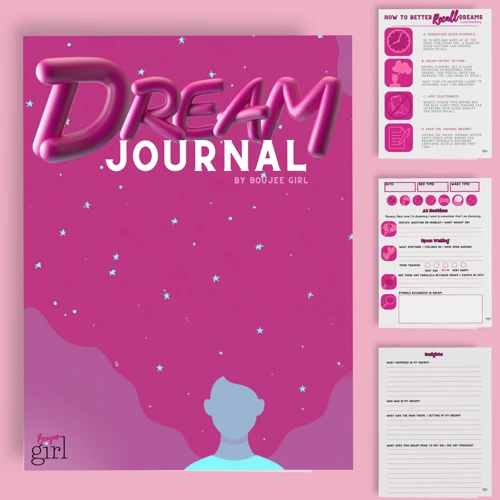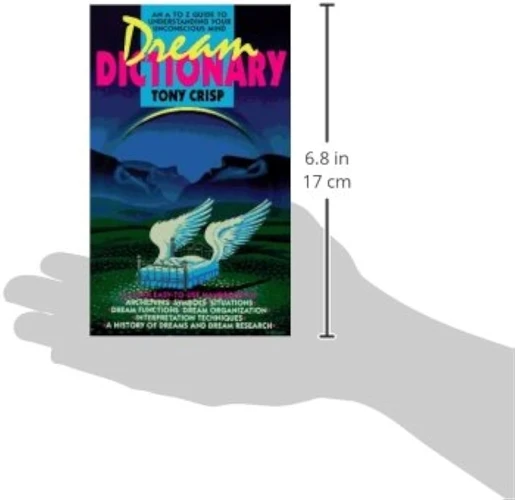Have you ever had a dream that felt like a symphony playing in your mind? Or woken up with a catchy melody that you couldn’t get out of your head? The connection between dreams and musical creativity is a fascinating topic that has captivated artists, scientists, and dream enthusiasts for centuries. In this article, we delve into the mysterious world of dreams and explore how they can inspire and influence musical compositions. From the purpose of dreams to the science behind their impact on creativity, we’ll uncover the hidden links that make dreams a rich source of inspiration for musicians. Join us on this journey as we unravel the intriguing connection between dreams and musical creativity in ways you’ve never imagined before.
Understanding Dreams

Dreams are enigmatic phenomena that have intrigued humans since ancient times. While their exact purpose is still debated, researchers speculate that dreams serve various functions, such as memory consolidation, emotional processing, and problem-solving. Dreams can be fleeting and easily forgotten, but some individuals possess the ability to recall and interpret their dreams with vivid clarity. Dream recall can be enhanced through techniques like keeping a dream journal or setting intentions before sleep. The content of dreams can range from mundane everyday experiences to fantastical scenarios filled with symbolism and metaphors. Symbolic instruments or melodies often appear in dreams, which could potentially inspire musicians in their musical compositions. Artists throughout history have found inspiration in their dreams, drawing upon the imagery, emotions, and stories they experience during sleep. From psychedelic rock songs to ethereal soundscapes, dreams have played a role in shaping many famous songs and albums. Understanding dreams and their connection to musical creativity opens up a whole new realm of inspiration for artists to explore.
The Purpose of Dreams
The Purpose of Dreams
The purpose of dreams is a subject that has fascinated psychologists, philosophers, and dream researchers for centuries. While there is no definitive answer, several theories have emerged to shed light on why we dream. One prevailing theory suggests that dreams serve as a means of processing emotions and memories. During REM (rapid eye movement) sleep, which is when most dreaming occurs, the brain consolidates and integrates information from the day. Dreams provide a space for the mind to make sense of these experiences, replaying and assimilating memories into existing knowledge networks. Another theory proposes that dreams are a way for the subconscious mind to communicate and resolve psychological conflicts. Symbols and metaphors, such as symbolic instruments in dreams, may represent repressed thoughts and emotions, offering an opportunity for subconscious expression and resolution. Additionally, dreams may play a role in problem-solving and creative ideation. Many inventors, artists, and musicians have reported experiencing breakthrough insights or inspiration in their dreams, which they then translate into their creative pursuits. For example, famous songs have been attributed to dream interpretation, where dream imagery and emotions are transformed into powerful lyrical and musical compositions. While the exact purpose of dreams remains elusive, it is clear that they have a profound influence on our thoughts, emotions, and creative potential.
Dream Recall and Interpretation
Dream Recall and Interpretation
Dream recall refers to the ability to remember the content of one’s dreams upon waking up. Some people have excellent dream recall, while others struggle to remember anything at all. The frequency and vividness of dreams can vary from person to person, and factors such as sleep quality, stress levels, and personal interest in dreams can influence dream recall.
To enhance dream recall, individuals can incorporate specific techniques into their routine. Keeping a dream journal is a popular method where one writes down their dreams immediately upon awakening. This helps to solidify the memory of the dream and allows for reflection and analysis later on. Another technique is setting an intention before sleep to remember dreams, often repeated as a mantra or affirmation.
Dream interpretation involves analyzing the symbols, themes, and emotions present in a dream to uncover its potential meaning. Dreams are highly personal and can be influenced by an individual’s experiences, beliefs, and emotions. While some dreams may seem bizarre or nonsensical, they often contain hidden messages or insights.
Interpreting dreams can be done through various methods, such as analyzing common dream symbols, exploring personal associations with dream elements, or seeking the guidance of a dream analyst or psychologist. It is important to approach dream interpretation with an open mind and recognize that the meaning of a dream can be subjective.
By honing the skill of dream recall and delving into the world of dream interpretation, individuals can gain a deeper understanding of their subconscious mind and uncover potential sources of inspiration for their creative endeavors. Dreams can serve as a wellspring of ideas, emotions, and experiences that can be channeled into musical compositions, adding depth and richness to the creative process.
Music and Creativity

The world of music is a vast and boundless space for creative expression. It serves as a powerful medium for conveying emotions, telling stories, and connecting people on a deep level. Music has the ability to inspire and ignite our imagination, transporting us to different landscapes and evoking a wide range of feelings. It has been said that the best music comes from the heart, tapping into the depths of our emotions. When it comes to musical creativity, the subconscious mind plays a pivotal role. Ideas and inspirations can strike at any moment, sometimes even in our dreams. Dreams have long been recognized as a wellspring of creativity, capable of unlocking new sounds, melodies, and lyrics that may have otherwise remained hidden. Musicians often find themselves waking up with a melody or a phrase that echoes in their minds, springing forth from the mysterious realm of dreams. By delving into the intersection of dreams and musical creativity, we can further explore the depths of artistic inspiration and unlock the full potential of our musical expression.
Musical Inspiration From the Subconscious
When it comes to musical creativity, the subconscious mind can be a powerful source of inspiration. Musical inspiration from the subconscious refers to the ideas, melodies, and harmonies that emerge from deep within our minds during periods of dreaming or even when we’re in a relaxed state. The subconscious mind is known for its ability to make unique connections, allowing musicians to tap into a wellspring of creativity. Here are some ways in which the subconscious mind can inspire musical creativity:
1. Intuitive Melodies: The subconscious often generates melodies that are entirely original and unexpected. These melodies can be catchy, haunting, or ethereal, and they can serve as the foundation for a new composition. Musicians who pay close attention to their dreams or moments of relaxation may discover captivating melodies that they would have never thought of consciously.
2. Emotional Expression: The subconscious mind is closely tied to our emotions, and it can bring forth deeply buried feelings that may not be fully accessible in our waking state. This emotional richness can imbue music with a unique depth and intensity. Musicians who tap into their subconscious can channel powerful emotions into their compositions, resulting in music that resonates deeply with listeners.
3. Unconventional Harmonies and Arrangements: The subconscious mind has a tendency to break free from conventional patterns and explore unconventional combinations. Musicians who draw inspiration from their subconscious often incorporate unconventional chord progressions, unexpected instrumentations, or experimental arrangements that push the boundaries of traditional musical structures.
4. Unlocking Creative Blocks: When faced with creative blocks or lack of inspiration, turning to the subconscious mind can be a valuable solution. By engaging the subconscious through techniques like meditation, dream analysis, or automatic writing, musicians can break free from creative stagnation and find fresh ideas that reignite their musical creativity.
In summary, musical inspiration from the subconscious is a rich and often untapped resource for musicians. By exploring their dreams, embracing relaxation techniques, and delving into their subconscious mind, artists can uncover a world of unique melodies, emotional expressions, unconventional harmonies, and overcome creative blocks. Embracing the power of the subconscious can lead to extraordinary musical creations that captivate and resonate with both the artists themselves and their audiences.
Dreams as a Source of Melodies and Lyrics
Dreams have long been recognized as a fertile ground for musical inspiration. For composers and songwriters, dreams can serve as a source of melodies and lyrics that may not have been accessible during their waking state. When we dream, our inhibitions and logical thinking often take a backseat, allowing for the emergence of unique and unconventional musical ideas. Whether it’s a catchy tune that plays in your dream or a set of poetic verses that flow effortlessly, the creative potential of dreams is boundless.
Musicians often report waking up with fragments of melodies or lyrics echoing in their minds after a particularly vivid dream. These dream-induced compositions can possess a certain ethereal quality, as if coming from a realm beyond our conscious grasp. It’s not uncommon for artists to scramble to capture these fleeting musical ideas before they vanish into the recesses of memory.
Dreams also have the power to evoke strong emotions and tap into subconscious desires. This emotional depth can serve as a wellspring of inspiration for songwriters, allowing them to explore deeply personal and intimate themes through their music. Dreams can provide a gateway to untapped emotions and experiences, lending a raw authenticity to musical compositions.
Dreams often incorporate elements of our own life experiences and memories. They can serve as a means of processing and reflecting upon past events, relationships, and emotions. By tapping into these dream narratives, musicians can draw from their own unique stories and translate them into lyrics that resonate with listeners on a profound level.
In essence, dreams act as a creative well, providing a vast array of musical possibilities. They offer a gateway to a realm where imagination knows no bounds, allowing artists to explore uncharted territories of sound and language. By harnessing the power of dreams as a source of melodies and lyrics, musicians can unlock a treasure trove of creativity and bring their deepest musical visions to life.
Dreams and Songwriting Techniques

When it comes to songwriting, dreams can be a valuable tool for musicians to tap into their creative potential. The abstract nature of dreams allows for the exploration of new sounds, styles, and emotions that may not have been accessible in the waking state. Dreams and songwriting techniques often go hand in hand, as dreams can provide a wellspring of inspiration for melodies, lyrics, and even entire compositions. By delving into the subconscious realm of dreams, musicians can unlock hidden emotions and access a more profound level of creativity. Dream-based composition involves harnessing the imagery, themes, and emotions from dreams and translating them into musical form. This process allows artists to capture the essence of their dreams in a tangible way, creating music that resonates with both themselves and their audience. From surreal landscapes to poignant narratives, dreams offer a vast array of songwriting possibilities, making them a valuable resource for musical innovation.
Using Dreams to Explore New Sounds and Styles
Musical creativity knows no bounds, and dreams can serve as a gateway to uncharted sonic territories. Using dreams to explore new sounds and styles allows musicians to tap into their subconscious and discover unique musical ideas. In dreams, the mind is free from the constraints of reality, enabling the exploration of unconventional sounds and combinations. For example, a dream may feature a sequence of otherworldly melodies or a fusion of musical genres that one might not have considered while awake. By paying close attention to the sounds, rhythms, and harmonies that arise in dreams, musicians can extract inspiration and incorporate them into their compositions. These dream-inspired elements can infuse a sense of novelty and intrigue into their music, pushing the boundaries of their traditional styles. Additionally, dreams may reveal unconventional chord progressions, unusual time signatures, or experimental arrangements that can breathe new life into the creative process. Embracing the unexpected and harnessing the power of dreams can unlock a world of sonic possibilities, allowing musicians to evolve and explore new frontiers of musical expression.
Unlocking Hidden Emotions Through Dream-based Composition
Unlocking Hidden Emotions Through Dream-based Composition can be a powerful technique for musicians looking to tap into their deeper emotional reservoirs. Dreams often have a way of accessing and expressing emotions that may be difficult to access consciously. Through dream-based composition, artists can channel these hidden emotions into their music, creating a raw and authentic connection with their listeners. Dreams can serve as a gateway to the subconscious mind, revealing emotions that are buried beneath the surface. Whether it’s a haunting melody, a melancholic chord progression, or lyrics that resonate on a deeply personal level, dream-based composition allows musicians to explore and express these emotions in a profound and meaningful way. By delving into the symbolism and themes present in their dreams, artists can infuse their compositions with a depth and richness that is unparalleled. This process can be cathartic, as it allows musicians to confront and process their emotions in a creative and therapeutic manner. Through dream-based composition, musicians have the opportunity to create music that not only resonates with their audience, but also taps into the universal human experience of emotions, connecting on a profound level.
The Science Behind the Connection

The intriguing connection between dreams and musical creativity extends beyond mere inspiration, delving into the realm of science. reveals that neurological processes play a significant role in bridging these two realms. Research has shown that during REM (Rapid Eye Movement) sleep, the brain experiences heightened activity in regions responsible for creativity and emotional processing. This activity sparks intricate connections between memories, emotions, and musical capabilities. Dreams can tap into these creative pathways, allowing musicians to access subconscious ideas, melodies, and emotions that might not surface during waking hours. Additionally, studies suggest that the brain’s reorganization and consolidation of memories during sleep can contribute to enhanced musical creativity. As scientists continue to unravel the mysteries of dreams and the brain, the scientific basis for the connection between dreams and musical creativity becomes clearer, highlighting the profound influence that our dream states can have on musical expression.
Neurological Effects of Dreams on Musical Creativity
The neurological effects of dreams on musical creativity are an area of growing interest among researchers and scientists. Studies have shown that during the REM (rapid eye movement) stage of sleep, which is when most dreaming occurs, there is increased activity in the brain regions associated with creativity, such as the prefrontal cortex and the hippocampus. This heightened brain activity during dreams may facilitate the formation of novel connections and associations, leading to innovative musical ideas. Dreams have been found to enhance the brain’s ability to generate new and unconventional solutions to problems, a skill that is crucial for musical composition. Neurotransmitters like dopamine and serotonin, which play a role in emotional regulation and reward processing, are also active during dreaming, potentially influencing the emotional depth and expressiveness of musical creations. The dream state may provide a unique opportunity for the brain to process emotions in a heightened way, which can then be translated into the emotional nuances of musical compositions. The complex interplay between neural networks, neurotransmitters, and emotional processing during dreams contributes to the neurological effects on musical creativity, underscoring the profound impact that dreams can have on the artistic process.
Dreaming and the Brain’s Creative Pathways
The fascinating realm of dreams extends beyond the realms of our subconscious mind and into the very pathways of creativity within our brains. Research has shown that dreaming plays a crucial role in stimulating and activating the brain’s creative pathways. During the dream state, multiple regions of the brain become highly active and communicate with each other in intricate ways. This interplay between different brain regions allows for the formation of new connections and associations, which is fundamental to the creative process. Dreaming has been linked to increased neural plasticity, a phenomenon that enhances the brain’s ability to adapt, learn, and generate new ideas. This heightened plasticity during dreaming offers a fertile ground for musical inspiration and innovation, as it encourages the brain to explore new possibilities, experiment with novel sounds, and envision unique musical arrangements. Dreaming facilitates the integration of emotions and experiences, allowing musicians to tap into deeper layers of their creativity. By exploring the complex neural dynamics that occur during dreams, researchers are gaining a deeper understanding of how dreaming impacts the brain’s creative pathways and how musicians can harness this connection to enhance their musical output.
Real-life Examples

Real-life examples of the connection between dreams and musical creativity abound, showcasing the profound impact that dreams can have on artists’ work. Throughout history, renowned musicians have drawn inspiration from their dreams to create iconic songs. Take, for example, Paul McCartney of The Beatles, who famously dreamt of a melody and woke up to compose the instant classic “Yesterday.” Similarly, the legendary guitarist Jimi Hendrix claimed that his innovative guitar techniques were influenced by dreams. Dream imagery and symbolism have also made their way into the creative processes of musicians. The band Fleetwood Mac’s hit “Rhiannon” was inspired by a dream about a Welsh sorceress, while the iconic album “The Wall” by Pink Floyd delves into the themes of isolation and disillusionment, which were inspired by band member Roger Waters’ dreams. These real-life examples demonstrate how dreams can serve as a wellspring of inspiration for musicians, producing unique and enduring pieces of music that resonate with audiences around the world.
Renowned Musicians Affected by Dreams
Renowned musicians have long been influenced by the power of dreams, finding inspiration in the ethereal realm of the subconscious. One such example is Paul McCartney, who famously dreamt the melody for one of The Beatles’ most iconic songs, “Yesterday.” The melody came to him in a dream, and upon waking, McCartney rushed to his piano to ensure he remembered it. The dream-inspired composition went on to become one of the most covered songs in music history. Similarly, the legendary guitarist Jimi Hendrix credited his dreams for influencing his innovative guitar playing style. He often spoke about receiving musical ideas and visions in his dreams, which he then translated into mind-bending riffs and solos. The influence of dreams on iconic songs extends beyond the realm of popular music. Classical composer Richard Wagner once dreamt of a grand opera featuring a mythical hero, which propelled him to write the monumental work “Tristan and Isolde.” These examples highlight how dreams can have a profound impact on the creative process of musicians, providing them with unique melodies, lyrics, and musical ideas that resonate with audiences around the world.
The Influence of Dreams on Iconic Songs
Dreams have had a profound influence on the creation of iconic songs throughout music history. Artists who have incorporated their dream experiences into their songwriting have produced some of the most memorable and impactful compositions. Here are a few examples of how dreams have influenced famous songs:
1. “Yesterday” by The Beatles: Paul McCartney famously dreamt the melody and lyrics to the legendary song “Yesterday.” Upon waking up, he immediately picked up his guitar and composed the iconic tune. The dream served as a direct source of inspiration for one of the most beloved songs in pop music history.
2. “Enter Sandman” by Metallica: The heavy metal band Metallica drew inspiration from drummer Lars Ulrich’s recurring childhood nightmare for their hit song “Enter Sandman.” The lyrics portray the haunting and eerie atmosphere of the dream, capturing the fear and anxiety that Ulrich experienced during his sleep.
3. “Sweet Child O’ Mine” by Guns N’ Roses: Guitarist Slash came up with the iconic guitar riff for “Sweet Child O’ Mine” in a dream. The melodic and instantly recognizable intro of the song was a result of his unconscious creativity, solidifying its place as one of the greatest rock anthems of all time.
4. “Purple Haze” by Jimi Hendrix: The psychedelic rock legend Jimi Hendrix claimed that he wrote the classic song “Purple Haze” based on a dream he had. The dream’s vivid imagery and the feeling it evoked led to the creation of the song’s surreal and mind-altering lyrics.
These examples highlight how dreams have acted as a wellspring of inspiration for musicians, providing them with melodies, lyrics, and unique themes that resonate with audiences worldwide. The influence of dreams on iconic songs showcases the extraordinary connection between the unconscious mind, creativity, and musical expression.
Exploring Lucid Dreaming

Imagine a world where you have full control over your dreams, where you can actively participate and shape the unfolding events. This phenomenon is known as lucid dreaming, a state of awareness within the dream where the dreamer becomes conscious that they are dreaming. Lucid dreaming allows individuals to explore and interact with their dream environments, creating endless possibilities for creativity and self-exploration. Musicians, in particular, can utilize lucid dreaming as a powerful tool for musical exploration. In a lucid dream, one can experiment with different melodies, harmonies, and rhythms that may not have been possible in the waking world. The boundaries of conventional musical composition can be pushed, and new ideas can emerge from the depths of the subconscious. Lucid dreaming also offers opportunities for musical practice, enabling musicians to improve their skills, experiment with improvisation, and overcome performance anxiety in a safe and immersive dream space. The world of lucid dreaming presents a gateway to unlocking untapped creative potential and expanding the boundaries of musical expression.
Lucid Dreaming and Musical Exploration
Lucid dreaming is a state of consciousness where the dreamer is aware that they are dreaming and can actively participate and manipulate the dream environment. This phenomenon has captivated the curiosity of musicians and composers due to its potential for musical exploration. In a lucid dream, one can experiment with different sounds, musical styles, and even play musical instruments without the physical limitations of the waking world.
Musical improvisation: Lucid dreaming offers a unique opportunity for musicians to engage in spontaneous musical improvisation. In a lucid dream, individuals can tap into their subconscious mind and access new musical ideas and techniques that they may not have explored consciously.
Virtual rehearsals: Lucid dreaming can also be utilized as a form of rehearsal for musicians. They can mentally practice their instrument or rehearse an upcoming performance in the dream state. This allows musicians to refine their skills and test out different musical approaches without the constraints of time and physical limitations.
Multisensory experiences: Lucid dreams can provide musicians with vivid and immersive multisensory experiences that can fuel their creativity. Musicians can engage with their dream environment, experiencing not only the sounds but also the visual and emotional aspects of their compositions.
Collaborations with dream characters: In a lucid dream, musicians may have the opportunity to collaborate with dream characters or even deceased musicians. They can compose music together, exchange musical ideas, and experience unique musical interactions that are only possible in the dream realm.
Lucid dreaming presents a gateway for musical exploration and experimentation. By harnessing the power of lucid dreams, musicians can access a boundless realm of creativity, push the boundaries of their musical abilities, and uncover new and innovative approaches to composition and performance.
The Use of Lucid Dreaming for Musical Practice
Lucid dreaming, the state of being aware that one is dreaming while still immersed in the dream, offers a unique avenue for musicians to engage with their craft. The use of lucid dreaming for musical practice allows artists to tap into their subconscious mind, exploring unfamiliar melodies, rhythms, and harmonies that may not have surfaced in awake states. During lucid dreams, musicians can intentionally shape the musical environment, experimenting with different instruments, styles, and genres. This practice enables them to push the boundaries of their creativity without the constraints of the waking world. By cultivating lucidity in their dreams, musicians can practice intricate techniques, improvise freely, and compose elaborate musical pieces in a realm unconstrained by physical limitations. The experience of playing or creating music in a lucid dream can feel extraordinarily vivid and immersive, with the potential to inspire groundbreaking ideas that bridge the gap between dreams and reality.
Tapping into Dream Imagery for Performances

Bringing the captivating world of dreams to life on stage is a unique and mesmerizing way for musicians and performers to connect with their audiences. Tapping into dream imagery for performances allows artists to create immersive experiences that transport the audience into the depths of their subconscious. From elaborate stage designs inspired by dream landscapes to utilizing symbols and motifs found in dreams in choreography, performances can become a visual and auditory feast for the senses. The ethereal and surreal nature of dreams provides endless possibilities for artists to explore and push the boundaries of their creativity. By channeling the emotions, narratives, and imagery from their dreams, musicians and performers can craft unforgettable experiences that captivate and resonate with their audience.
Creating Stage Designs Inspired by Dreams
Creating stage designs that are inspired by dreams is a unique and captivating way for musicians and performers to bring their artistic vision to life. When we dream, our minds are free to explore limitless possibilities, and often, the imagery we encounter is both surreal and visually intriguing. The vividness of dreams, coupled with their symbolic nature, provides an abundant source of inspiration for stage designers. From ethereal landscapes to surrealistic backdrops, the dream world offers a wealth of visual elements that can be seamlessly incorporated into performances. One of the key aspects of creating stage designs inspired by dreams is capturing the essence and atmosphere of the dream itself. This can be achieved through the use of abstract shapes, vibrant colors, and unconventional materials. By translating the elements and emotions of a dream into a visually stunning stage design, musicians can enhance the overall experience for their audience, creating a truly immersive and memorable performance. From large-scale productions with elaborate sets to intimate and minimalistic performances, dream-inspired stage designs provide endless possibilities for artistic expression and experimentation. Whether it’s a hauntingly beautiful scene or a dynamically evolving backdrop, the use of dream imagery can transport the audience into a surreal and fantastical realm, leaving a lasting impression on their minds and hearts.
Utilizing Dream Symbols in Choreography
Utilizing dream symbols in choreography is a unique and thought-provoking approach that allows dancers to bring the ethereal and symbolic elements of dreams into their performances. Dreams often contain vivid and powerful imagery that can convey emotions and ideas in abstract ways, making them a wellspring of inspiration for choreographers. By interpreting dream symbols with movement, dancers can create visually captivating and emotionally resonant performances.
Choreographers can start by keeping a dream journal and noting down recurring symbols or motifs that appear in their dreams. These symbols can be anything from animals, elements of nature, or abstract concepts. By studying the personal significance and cultural interpretations of these symbols, choreographers gain a deeper understanding of their subconscious associations and meanings.
Once the dream symbols are identified, choreographers can begin incorporating them into their choreography. They can translate the movements and dynamics inspired by the dream symbols, infusing them into the choreographic sequences. For example, if a dream symbolizes freedom or liberation, the choreographer may explore fluid and dynamic movements with expansive gestures and jumps.
In addition to the movements themselves, choreographers can also incorporate dream-inspired imagery and visuals into the stage design or costumes. By using dream symbols as a starting point for creative exploration, dancers can tap into a rich world of symbolism and metaphor that adds depth and intrigue to their performances.
Utilizing dream symbols in choreography not only allows dancers to express their personal experiences and emotions but also creates a resonant connection with the audience. By evoking the mysterious and subconscious realm of dreams, dancers can transport the viewers into a dreamlike state, immersing them in a unique and captivating performance.
Enhancing Musical Creativity through Dream Journaling

Enhancing musical creativity through dream journaling is a powerful technique that allows musicians to tap into the depths of their subconscious. Keeping a dream journal involves recording dreams immediately upon waking, capturing as many details as possible. By consistently documenting dreams, musicians can gather a wealth of inspirational material for their compositions. Dreams offer unique imagery, emotions, and narratives that can be translated into melodies, lyrics, and musical structures. Through the practice of dream journaling, artists can uncover hidden connections and patterns within their dreams, leading to novel and innovative musical ideas. The act of journaling itself serves as a form of reflection and self-expression, fostering a deeper understanding of one’s own creative process. Whether it’s the haunting melody that played in a dream or the profound emotions experienced, dream journaling enables musicians to harness the power of their dreams, fueling their musical creativity in extraordinary ways.
Keeping a Dream Journal for Inspirational Material
Keeping a dream journal can be a valuable tool for musicians seeking inspirational material for their compositions. By documenting dreams in detail, artists can capture the essence of their dream experiences and translate them into musical ideas. Here are some steps to effectively keep a dream journal for creative inspiration:
1. Record Dreams Immediately: Upon waking, it’s important to write down the dream as soon as possible. Dreams can fade quickly from memory, so it’s essential to capture the details before they disappear.
2. Document Descriptive Elements: Write down any vivid imagery, emotions, sounds, or melodies that stood out in the dream. Include specific details such as locations, characters, or symbolic instruments that played a role in the dream.
3. Explore Symbolism and Metaphors: Dreams often communicate through symbolism and metaphors. Analyze the symbols present in the dream and consider how they could be translated into musical elements. Symbolic instruments or melodies can provide unique and unconventional ideas for musical compositions.
4. Reflect on Emotions: Dreams can evoke powerful emotions. Take note of the feelings experienced in the dream and consider ways to convey those emotions through music. Whether it’s capturing a sense of joy, fear, or nostalgia, emotions can be a catalyst for musical creativity.
5. Experiment with Musical Interpretation: Use the elements recorded in the dream journal as a starting point to create musical sketches or improvisations. Let the dreams guide the creative process and explore new sounds, harmonies, or rhythms inspired by the dream experiences.
6. Revisit and Reinterpret: Over time, revisit past dream journal entries. As perspectives and musical styles evolve, reinterpretation of older dream material can lead to fresh and innovative compositions. The dream journal becomes a reservoir of inspiration that can be tapped into whenever needed.
Keeping a dream journal for inspirational material is a way for musicians to tap into the depths of their subconscious and unlock a wellspring of creative ideas. By capturing the essence of dreams and translating them into musical elements, artists can create compositions that incorporate the enigmatic beauty and symbolism of the dream world.
Translating Dream Experiences into Musical Compositions
Translating dream experiences into musical compositions is a unique and personal process that allows musicians to tap into the depths of their subconscious mind. When a musician is inspired by a dream, they can use various techniques to capture the essence of the dream and transform it into music. One approach is to focus on the emotions and atmosphere of the dream. By reflecting on the feelings evoked during the dream, musicians can compose music that captures the same mood, whether it be joyful, melancholic, or mysterious. The melodies, harmonies, and rhythms can be crafted to convey the emotional landscape of the dream. Additionally, dream imagery can serve as a source of inspiration. Musicians may use symbolic elements from their dreams to create musical motifs or themes. For example, if a dream features a recurring image of water, the musician might incorporate flowing, fluid sounds into their composition. The dream becomes a wellspring of musical ideas, guiding the composer’s choices in instrumentation, arrangement, and overall structure. By channeling the essence of their dream experiences into their musical compositions, artists are able to infuse their work with a unique sense of depth, personal meaning, and a touch of the mysterious. The result is a musical piece that resonates with the dreamer’s subconscious and invites listeners on a journey into the realm of dreams.
Exploring Lucid Dreaming

Imagine being able to control your dreams, to navigate through fantastical landscapes, and interact with dream characters at will. This is the intriguing realm of lucid dreaming. Lucid dreaming is a unique state of consciousness where the dreamer becomes aware that they are dreaming while still in the dream itself. This awareness grants the dreamer a level of control and agency over the dream narrative, allowing them to shape the dream environment and even influence their actions within the dream. Lucid dreaming has captivated the interest of researchers and artists alike, with musicians exploring the potential of this phenomenon for musical exploration. In a lucid dream, the dreamer can create and experiment with different musical compositions, improvisations, and sounds within the dream environment. This immersive and interactive experience can provide a unique platform for musical experimentation and innovation, pushing the boundaries of what is possible in the realm of music creation. Lucid dreaming offers a doorway to a whole new level of creativity and self-expression for musicians, where the limits of reality are transcended, and musical possibilities are boundless.
Studying the Link: Psychologists and Researchers
Psychologists and researchers have dedicated their efforts to studying the intricate link between dreams and musical creativity. By conducting experiments, analyzing data, and exploring the experiences of musicians, these specialists aim to unravel the mysteries behind this connection. Through surveys and interviews, psychologists delve into the experiences of musicians who draw inspiration from their dreams, seeking to understand the common themes, emotions, and symbols that arise. This research not only highlights the impact of dreams on musical compositions but also sheds light on the cognitive and emotional processes at play. Additionally, psychologists explore the phenomenon of lucid dreaming and its potential for promoting musical exploration. Researchers delve into the potential benefits of lucid dreaming, such as enhancing musical practice, improvisation, and songwriting techniques. By studying the link between dreams and musical creativity, psychologists and researchers contribute to our understanding of the human imagination and its boundless capacity for musical expression.
Current Research Findings
Current research findings on the connection between dreams and musical creativity have shed light on the fascinating relationship between these two realms. Scientists and psychologists have conducted numerous studies to explore the impact of dreams on musical inspiration and composition. Here are some noteworthy discoveries:
1. Neurological Effects: Neuroimaging studies have revealed that when musicians engage in musical activities during dreaming or lucid dreaming, specific regions of the brain associated with creativity and musical processing show increased activity. This suggests that dreams may enhance neural connectivity and stimulate creative pathways within the brain.
2. Emotional Processing: Dreams have been found to elicit strong emotional responses, and research suggests that these emotions experienced during dreaming can influence musical compositions. Emotionally charged dreams may serve as a catalyst for artists to express their innermost feelings through their music, resulting in more powerful and evocative compositions.
3. Symbolic Interpretation: Dreams are often rich in symbolism and metaphorical imagery. Researchers have found that musicians who actively explore the symbolism in their dreams and incorporate it into their musical compositions can create unique and profound works. Dream symbols can inspire musical motifs, chord progressions, or even the choice of instruments, adding depth and complexity to the composition.
4. Collaborative Potential: Dream sharing and collaborative dreaming projects have demonstrated the potential of dreams as a tool for collaborative music creation. By sharing dream experiences and collectively exploring the imagery and emotions in dreams, musicians can collaborate to create innovative and imaginative musical pieces.
5. Therapeutic Benefits: Research suggests that engaging with dreams and incorporating dream material into musical compositions can have therapeutic benefits. Musicians find that using their dreams as a source of inspiration allows them to tap into their subconscious and explore unresolved emotions or experiences, leading to a cathartic and healing process.
These current research findings not only validate the deep connection between dreams and musical creativity but also open up new avenues for exploration and understanding in the field. The scientific insights gained from these studies offer valuable knowledge for musicians and researchers alike, further enriching the exploration of dreams in relation to musical composition and artistic expression.
Conclusion
In conclusion, the connection between dreams and musical creativity is a complex and fascinating phenomenon. Dreams have the potential to inspire musicians, unleashing new sounds, lyrics, and emotions in their compositions. From subconscious musical ideas to hidden emotions and experiences, dreams provide a vast reservoir of inspiration for artists to tap into. Understanding the purpose of dreams and how they can be recalled and interpreted allows musicians to explore the depths of their subconscious and unlock creative potential. The science behind the neurological effects of dreams on musical creativity sheds light on the intricate workings of the brain’s creative pathways. Real-life examples of renowned musicians who have been influenced by their dreams demonstrate the profound impact dreams can have on musical expression. Furthermore, exploring lucid dreaming and utilizing dream imagery in performances provide avenues for musicians to take their creativity to new heights. Dream journaling becomes a valuable tool for capturing and translating dream experiences into musical compositions. As psychologists and researchers continue to study the link between dreams and musical creativity, new insights and research findings bring us closer to unraveling the mystery of this connection. In the realm of dreams, musicians find an endless source of inspiration waiting to be explored and transformed into captivating melodies and harmonies. So, embrace your dreams, unleash your creativity, and let the magic of music and dreams intertwine in the creation of extraordinary musical masterpieces.
Frequently Asked Questions
What is the purpose of dreams?
The exact purpose of dreams is still not fully understood by scientists. However, theories suggest that dreams can serve various functions, such as memory consolidation, emotional processing, problem-solving, and creative inspiration.
How can I improve my dream recall?
Improving dream recall can be achieved through various techniques. Keeping a dream journal, placing intention before sleep to remember dreams, and practicing mindfulness upon waking can enhance your ability to recall and remember the details of your dreams.
Can dreams inspire musical creativity?
Absolutely! Dreams have long been a source of inspiration for musicians and composers. Melodies, lyrics, and even entire musical compositions can be derived from dream experiences. Many renowned musicians have attributed their creative ideas to the imagery and emotions they encounter in their dreams.
What are symbolic instruments in dreams?
Symbolic instruments in dreams are objects that hold significance beyond their literal meaning. In the context of dreams, these instruments can represent emotions, desires, or aspects of the dreamer’s personality. For musicians, the appearance of symbolic instruments in dreams can provide unique inspiration for creating new musical compositions.
Are there any famous songs inspired by dream interpretations?
Yes, there are several famous songs that have been influenced by dream interpretations. One notable example is the song “Yesterday” by The Beatles, which Paul McCartney claims came to him in a dream. The dream provided him with the iconic melody that would later become one of the band’s most beloved and successful songs.
How can dreams unlock hidden emotions for songwriting?
Dreams can act as a gateway to our subconscious mind, allowing us to tap into emotions and feelings that may be buried deep within us. By exploring dream experiences and translating them into musical compositions, artists can uncover and express emotions that they may not have consciously been aware of.
What are the neurological effects of dreams on musical creativity?
Research suggests that dreams can stimulate brain activity in areas associated with creativity and emotional processing. The activation of these neural pathways during dreams may contribute to the generation of creative ideas and musical inspiration.
What is lucid dreaming and how does it relate to musical exploration?
Lucid dreaming is the state of being aware that you are dreaming while still in the dream itself. This heightened level of consciousness allows individuals to have control over their dream experiences, including the ability to manipulate the dream environment and interact with dream characters. Lucid dreaming can be a powerful tool for musicians to explore new musical ideas and experiment with different sounds and styles within the dream world.
How can dream imagery be used in stage designs for performances?
Dream imagery can be a fantastic source of inspiration for creating visually stunning stage designs. By harnessing the surreal and symbolic elements present in dreams, musicians can create immersive and captivating experiences for their audiences, bringing the dream world to life on stage.
How can dream journaling enhance musical creativity?
Keeping a dream journal allows musicians to capture the essence of their dreams, including the emotions, symbols, and narratives present. By revisiting and reflecting on these dream encounters, artists can draw inspiration for their musical compositions, incorporating the unique experiences and imagery from their dreams into their creative process.








